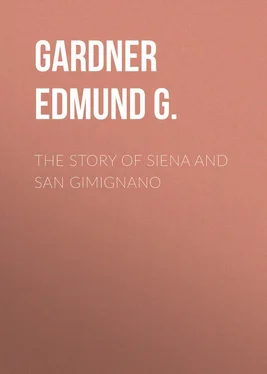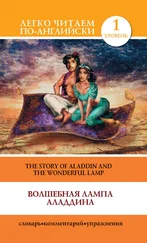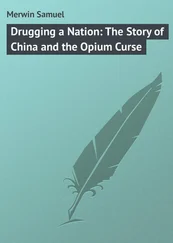Edmund Gardner - The Story of Siena and San Gimignano
Здесь есть возможность читать онлайн «Edmund Gardner - The Story of Siena and San Gimignano» — ознакомительный отрывок электронной книги совершенно бесплатно, а после прочтения отрывка купить полную версию. В некоторых случаях можно слушать аудио, скачать через торрент в формате fb2 и присутствует краткое содержание. Жанр: foreign_antique, foreign_prose, на английском языке. Описание произведения, (предисловие) а так же отзывы посетителей доступны на портале библиотеки ЛибКат.
- Название:The Story of Siena and San Gimignano
- Автор:
- Жанр:
- Год:неизвестен
- ISBN:нет данных
- Рейтинг книги:3 / 5. Голосов: 1
-
Избранное:Добавить в избранное
- Отзывы:
-
Ваша оценка:
- 60
- 1
- 2
- 3
- 4
- 5
The Story of Siena and San Gimignano: краткое содержание, описание и аннотация
Предлагаем к чтению аннотацию, описание, краткое содержание или предисловие (зависит от того, что написал сам автор книги «The Story of Siena and San Gimignano»). Если вы не нашли необходимую информацию о книге — напишите в комментариях, мы постараемся отыскать её.
The Story of Siena and San Gimignano — читать онлайн ознакомительный отрывок
Ниже представлен текст книги, разбитый по страницам. Система сохранения места последней прочитанной страницы, позволяет с удобством читать онлайн бесплатно книгу «The Story of Siena and San Gimignano», без необходимости каждый раз заново искать на чём Вы остановились. Поставьте закладку, и сможете в любой момент перейти на страницу, на которой закончили чтение.
Интервал:
Закладка:
The critical condition of Montalcino combined with Ghibelline intrigues to bring the Florentines again into the field. Farinata and his fellow exiles gave the anziani , who then ruled in Florence, to understand that Siena was thirsting for a change of government, for the overthrow of the Twenty-four, and the banishment of Provenzano, “who was the greatest popolano of Siena,” and that the nobles were prepared to sell the city to the Florentines. In spite of the strenuous opposition of Tegghiaio Aldobrandino and the Conte Guidoguerra, the Florentines decided instantly to resume hostilities – nominally to relieve Montalcino, in reality to destroy Siena. They called the people to arms to follow the standards of their companies, summoned aid from Lucca and Bologna and all the Guelf cities of their league. At the beginning of September the army of Florence with the Carroccio or battle car of the Republic, over which floated the red and white standard of the Commune, entered the Sienese contado, where it was joined by the men of Perugia and Orvieto. Without counting these, there were at least 3000 horsemen and more than 30,000 infantry; but there were traitors in the army, in secret understanding with the enemy. From their camp beyond the Arbia, the captain and commissaries of the Florentines sent ambassadors to the Sienese, to demand their instant and absolute submission. “Straightway throw down your walls,” they began, “in order that we may enter your city at whatever place likes us best.”
Forthwith the Twenty-four of Siena summoned the council to meet in the church of San Cristofano. There was some wavering at first. The worthy burghers knew nothing of the secret dealings of the Florentine exiles (to which, probably, Provenzano alone was privy), but had heard much of the might and fierceness of the invading forces, and several of the council urged a compromise. At once Provenzano Salvani sprang to his feet and bade them summon the Count Giordano. The Count came and, with the sixteen German constables, his seneschal and an interpreter, stood before the council. There was no thought of surrender then; the Germans shouted with delight at the prospect of double pay and speedy fighting, and Salimbene Salimbeni at once hurried to his palace and returned with the money, driving through the piazza in a cart covered with scarlet and decked with olive. Through his mouth the Twenty-four gave their reply to the Florentine herald: “Go back to your captain and the commissaries, and tell them that we shall answer them by word of mouth on the field.” The whole city was arming; before the church, the piazza of the Tolomei and all the streets leading to it were packed with a wildly expectant and ever increasing crowd. While away in the Duomo the Bishop assembled the clergy and religious, with bare feet moving in solemn procession to implore the divine aid against “the impious appetites of the Florentines,” the Twenty-four had elected Buonaguida Lucari sindaco with full powers – practically Dictator.
“Men of Siena,” cried Buonaguida from the steps of San Cristofano, “ye all know how we have recommended ourselves to the protection of King Manfred; let us now surrender ourselves, our goods and persons, our city and our contado with all our rights, to the Queen of Eternal Life, to our Lady and Mother, the Virgin Mary. Follow me now, all of you, with purity of faith and freedom of will, to make this offering.”
Bareheaded and barefooted, clad like a beggar with a halter round his neck, the Dictator solemnly carried the keys of the city to the Duomo, followed by the people, barefooted too, and crying continually, misericordia, misericordia . There all the clergy met them, and at the foot of the choir the Bishop and Dictator solemnly embraced, in pledge of the complete union of Church and State, while hereditary foes fell into each other’s arms. Then after silent prayer, prostrate before the altar, the Dictator in an impassioned harangue formally made over the city and contado of Siena to the Mother of Heaven, while the Bishop mounted the pulpit and solemnly exhorted the people to mutual forgiveness and to approach the sacraments. The next day there was a long procession through the streets, the keys were blessed and given over to the keeping of the Gonfalonieri (the elected heads of the three terzi). All night the churches had been thronged by crowds approaching the confessionals, by enemies seeking reconciliation with each other, and at daybreak the Twenty-four sent three heralds with the banners of each terzo to call the people to arms in the name of God and of the Virgin Mary.
It was Friday, September 3rd. The whole army consisted of a little more than 20,000 men. There were 800 Germans and other royal horsemen with the imperial banner, under Count Giordano and the Count of Arras; 400 more horsemen, partly Germans and partly noble Sienese, under the Count Aldobrandino degli Aldobrandeschi of Santa Fiora and Niccolò de’ Bigozzi, seneschal of the Commune. The Florentine and other Ghibelline exiles, under the Count Guido Novello and Farinata, were partly with Giordano, partly with Count Aldobrandino. There were 19,000 citizen infantry from the three terzi of the city and the contado, under the Podestà, Francesco Troghisio, and their three Gonfalonieri, with the Carroccio of the Republic over which floated a white standard “that gave right good comfort, for it seemed the mantle of the Virgin Mary.” A number of priests, some of them armed, accompanied the army; the rest with the Bishop, old men and women, spent the day fasting, going in procession from church to church throughout the city reciting litanies and the like. They marched out of the Porta Pispini and occupied the hill of Monteropoli beyond which, in the plain of the Cortine between the Biena and the Malena (little streams that join the Arbia), and on the opposite hill of Monteselvoli, lay the Guelf army – its leaders confidently expecting a revolution in Siena in their favour and the speedy surrender of one of the gates of the city. All during the night the Sienese harassed the Florentine camp, and on Saturday morning, September 4th, the battle began.
The Count of Arras, with some 400 horse and foot, advancing along the Biena, moved round Monteselvoli to fall upon the Florentine left flank; while the rest of the army left their hill, crossed the Arbia and approached the enemies’ position – the Florentines in the valley hastening up their own side of Monteselvoli to join the main body. The German heavy cavalry commenced the assault, dashing like dragons into the ranks of the men of Prato, Arezzo and Lucca, horse and men falling in heaps before their terrible lances. The Count Giordano led his tedeschi straight for the centre of the Guelfic army, where the “martinella” rang continuously over the Carroccio of Florence, round which the flower of the burgher army stood. The Count Aldobrandino with his cavalry and the eager Sienese followed up the German onslaught; but the resistance was long and stubborn. At last Bocca degli Abati, the traitor in the troop of Florentine nobles, hostis e cive factus as Leonardo Bruni puts it, struck Jacopo Pazzi with his sword on the arm that upheld one of the standards of the Republic; a portion of the cavalry went over to the enemy; the rest, seeing themselves betrayed, took to flight. Simultaneously the Count of Arras with the reserve, shouting “San Giorgio! San Giorgio!” burst furiously upon the Florentine flank. Then came, in Dante’s immortal phrase, “the havoc and the great slaughter that dyed the Arbia red.” The Sienese, writes the chronicler Niccolò di Giovanni Ventura, “seemed like unchained lions rushing upon their foes; little did it avail these to call on San Zanobi or Santa Liperata for aid, for they made a greater slaughter of them than do the butchers of their beasts on Good Friday.” The infantry were driven from their position down into the valley, only to be ruthlessly massacred. A band of Florentine burghers – the flower of the Primo Popolo – stood to the end in heroic desperation round the Carroccio and the standards, and fell in their places, resisting to the last, embracing and kissing the blood-stained wood of the car as they died. A number of the fugitives took refuge in the little castle of Montaperto and held out there till later in the day, when it was stormed and they were all put to the sword. It was not until evening had come that the Count Giordano and the Gonfalonieri of the Sienese bade that quarter should be given and prisoners accepted. The number of the slain Guelfs probably lies somewhere between 10,000, which is the Sienese estimate, and the 2500 given by Villani. The Carroccio had been taken; the popolo vecchio of Florence was “broken and annihilated,” in Villani’s terribly expressive phrase; every house in Florence had lost members, and the allied cities suffered only slightly less. Twelve thousand prisoners are said to have been taken. 7 7 The Sienese accounts of the battle by Domenico Aldobrandini and Niccolò di Giovanni Ventura (in which, says Prof. d’Ancona, the narrative has “una grandezza veramente epica”) are in Porri’s Miscellanea Storica Senese ; for the Florentine version see Villani, vi. 75-79, and Leonardo Bruni, Istoria Fiorentina II. (vol. i. pp. 215-225 in the edition of 1855). Cf. Villari, I primi due secoli della Storia di Firenze , ch. iv., and especially C. Paoli, La Battaglia di Montaperti , already referred to. Il Libro di Montaperti , edited by Prof. Paoli (Florence, 1889), is “the only official document of Florentine source which remains to us of that war.”
Интервал:
Закладка:
Похожие книги на «The Story of Siena and San Gimignano»
Представляем Вашему вниманию похожие книги на «The Story of Siena and San Gimignano» списком для выбора. Мы отобрали схожую по названию и смыслу литературу в надежде предоставить читателям больше вариантов отыскать новые, интересные, ещё непрочитанные произведения.
Обсуждение, отзывы о книге «The Story of Siena and San Gimignano» и просто собственные мнения читателей. Оставьте ваши комментарии, напишите, что Вы думаете о произведении, его смысле или главных героях. Укажите что конкретно понравилось, а что нет, и почему Вы так считаете.












